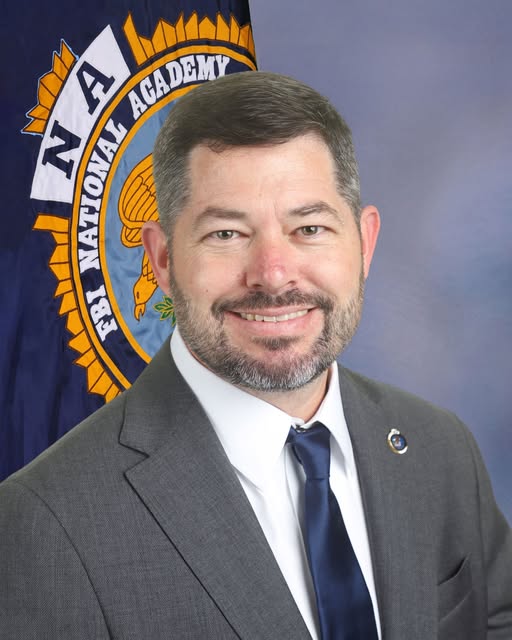 Ashley Louszko/ABC(NEW YORK) — Nancy Millar paced nervously as she prepared to meet a man she had never seen before, but whose face she would already knew.
Ashley Louszko/ABC(NEW YORK) — Nancy Millar paced nervously as she prepared to meet a man she had never seen before, but whose face she would already knew.
“I’m going to try not to lose it,” she said, wiping away tears.
The man was Pat Hardison, who underwent a groundbreaking face transplant last year, which was only made possible because of Millar’s decision to donate her son David Rodebaugh’s face and organs.
Rodebaugh died last summer after sustaining a head injury in a bicycle accident in Brooklyn, New York. He was 26 years old.
Millar wondered if Hardison’s forehead would still show the chicken pox scar her son’s once had.
“He [Rodebaugh] used to always just bend over and kiss me on the forehead and so we’d reciprocate it,” she said. “As soon as he’d leave that’d be the last thing I do. I’d hug him and kiss him on the forehead. We did it since he was little, since he had chicken pox.”
Hardison, a 42-year-old former firefighter from Mississippi who lost much of his face, including his nose, lips, eyelids and even ears in a house fire, finally got the chance to thank Rodebaugh’s mother in person a few weeks ago. ABC News Nightline was there and has been following this story for over a year.
“Thank you for being so strong and so healthy,” Millar told Hardison as they embraced. “Thank you for risking your life to do this. When I knew you were a firefighter I knew you had the strength to go through this.”
“Beautiful,” Hardison said. “They did [the surgery] beautiful.”
Millar took her time studying Hardison’s face, going over every angle, noting his cheeks, a mole on one side, and that old chicken pox scar.
“I am as proud of you as I was of my own son,” she told him. “It’s not David’s face, it’s your face.”
 Courtesy Nancy MillarMillar raised her son David as a single mom in Ohio. She said he was a happy kid who spent his childhood helping with his family’s craft business and riding anything that went fast.
Courtesy Nancy MillarMillar raised her son David as a single mom in Ohio. She said he was a happy kid who spent his childhood helping with his family’s craft business and riding anything that went fast.
“I think he could peddle a bike and cut wood before he could even walk,” Millar said. “He had a serious, serious thing for speed… He broke some bones. But there was no fear in that boy at all.”
Rodebaugh — Dave to his friends — worked as a bike mechanic and was an accomplished BMX rider. When he moved from Ohio to Brooklyn a few years ago, he found a new family in the bike messenger community and with a group who call themselves the “Lock Foot Posi.”
“Dave was without a doubt like the best guy you never met,” said Al Lopez, one of Rodebaugh’s best friends. “He had skills, like, skills and skills.”
Rodebaugh even won the Red Bull-sponsored Brooklyn Mini Drome cycling competition in 2014.
“I would have given anything to be there,” Millar said. “He was fearless, and even till the end he was fearless.”
In July 2015, about a year after winning the Mini Drome competition, Rodebaugh was riding without a helmet in Brooklyn when he crashed and hit his head. After clinging to life for three weeks, Millar made the difficult decision to let her son go.
Rodebaugh’s memory continues to live on in the white “ghost bike” memorial placed at the scene of his accident.
“I just wish I could physically feel him,” Millar said, visiting the ghost bike that honors her son. “He used to walk up behind me. And put those big ape arms around me and just sway back and forth and say, ‘I love you mommy.’ And he had the biggest arms. He made me feel so safe.”
Rodebaugh was an organ donor and also a potential match for an experimental surgery nearly 15 years in the making, an unprecedented procedure to give Pat Hardison a new face.
The two men’s lives would intersect because of a tragedy that took place in 2001. Hardison and his second wife Chrissi were raising their three children in his hometown of Senatobia, Mississippi. At 27, he was a successful salesman who ran the family tire business, but his real passion was working with the local volunteer fire department where he was a captain.
On Sept. 5, 2001, Hardison and his fellow firefighters responded to a house fire, and when they arrived, he entered the building with three other firefighters. He doesn’t remember much of what happened next, except the ceiling collapsing around him. By the time he got out of the inferno, he was unrecognizable.
Hardison was lucky to survive but the fire had burned away his scalp, ears, eyelids, nose and lips. His entire face was gone.
When he got home after spending two months in the hospital, Hardison said his three children, Alison who was 6, Dalton who was 3 and Averi who was 2 at the time, were terrified of him.
He underwent more than 70 surgeries over the next decade to try to rebuild his mouth, nose and eyelids using skin grafts. He even got implants to help anchor prosthetic ears. But each surgery only gave him minor improvements and doctors told him because of complications he would ultimately go blind.
Unable to have the life he wanted, Hardison became withdrawn and depressed.
Eventually, Hardison connected with renowned reconstructive surgeon Dr. Eduardo Rodriguez, the chair of the Wyss Department of Plastic Surgery at NYU Langone Medical Center in New York City. A pioneering surgeon in the emerging field of face transplants, Rodriguez took Hardison on as a patient, but it would be quite some time before they would find the right donor.
Not only were they looking for a donor that matched Hardison’s skin color, hair color and blood type, but the skeletal structure also had to be similar.
Hardison was placed on New York’s transplant donor list in August 2014, and Rodriguez and his team began working closely with LiveOnNY, the non-profit organ procurement organization that matches organ donors with patients in and around New York City. With such a specific set of criteria, LiveOnNY president and CEO Helen Irving said it was the hardest search the organization had ever conducted.
Just as Hardison was starting to lose hope, he finally got the call that a potential donor had been found.
Undergoing Groundbreaking Face Transplant Surgery
 Courtesy Hardison Family/NYU Langone Medical CenterRodebaugh matched all the criteria the surgical team had been looking for, but because face transplants are still experimental, they needed permission from his family.
Courtesy Hardison Family/NYU Langone Medical CenterRodebaugh matched all the criteria the surgical team had been looking for, but because face transplants are still experimental, they needed permission from his family.
Helen Irving’s team train for these delicate conversations, but they were still caught off guard by Rodebaugh’s mother’s reaction when they asked her about donating her son’s face.
“She just — immediately ‘yes’ came right out,” Irving said. “She knew straight away David would have done anything to help.”
The face transplant procedure is so extreme and so risky that Hardison’s doctors warned him he only had a 50-50 chance of surviving it. But it was a risk he was willing to take for the chance to get his life back and get closer to feeling normal again.
On Aug. 14, 2015, Hardison was prepped for surgery and wheeled into one operating room, while Rodebaugh’s body was wheeled into an adjacent room. Before starting, the surgical team held a moment of silence to honor Rodebaugh.
In a carefully coordinated surgery, Rodriguez slowly removed the donor’s face and scalp, including the outer skin, tissue, nerves and muscle, as the surgical team next door worked to remove the skin on Hardison’s face. With each step, Rodriguez updated the surgical team working on Hardison so that the two teams would remain in sync, and then they placed the donor face on Hardison. Among the trickiest parts of the surgery, Rodriguez said, was connecting the blood vessels.
In total, the surgery took 26 hours to finish and Hardison faced a long recovery.
The Road to Recovery and a Tearful Reunion
It’s been about 15 months since the face transplant surgery and Hardison still travels from Mississippi to New York City every month for check-ups. He’s the first face transplant recipient to go through the first year without rejection.
He’s been enjoying getting haircuts and shaving again, two things he wasn’t able to do before the transplant.
“Just all that stuff that I thought would never be in my life again,” he said.
Every day 22 Americans die waiting for a life-saving transplant operation, according to the American Transplant Foundation. Nationally, only 50 percent of eligible adults are registered as organ donors. In New York, where Hardison was wait-listed, that number is closer to 25 percent.
In addition to his face, Rodebaugh’s heart, liver and kidneys were also donated, along with his corneas, bone and skin tissue.
“That’s … four lives for organ recipients,” Irving said. “One for the gift of sight and countless others through bone and skin donation.”
On the day she met Hardison, Millar also got to meet three other recipients her son had helped — 10-year-old Antonio Concepcion, Jr., and 17-year-old Nicholas Darling had received Rodebaugh’s kidneys and 58-year-old Yanez McGriff had received his heart. All three had spent years on a transplant list.
Millar took turns meeting and hugging each recipient. She even used a stethoscope to listen to her son’s heart, now beating in McGriff’s chest.
“It’s so strong,” Millar told her, listening to the heart beat. “God bless you.”
Knowing that her son had helped give all these people a new chance at a better, healthier life bought Millar some comfort after the tragedy of losing him.
“The best day of my life was the day David was born. This is the second best day of my life,” Millar said. “David’s reborn to me. He’s back. He’s here. I knew he was here.”
Copyright © 2016, ABC Radio. All rights reserved.




